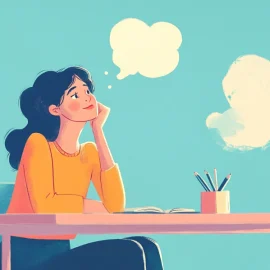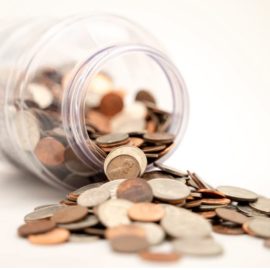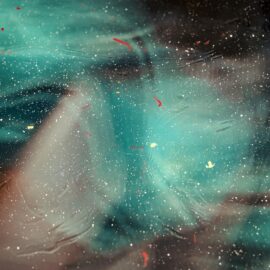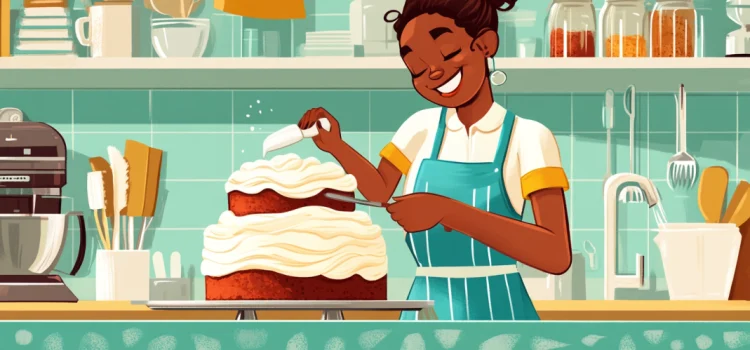
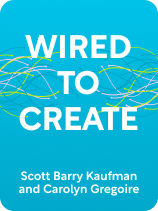
This article is an excerpt from the Shortform book guide to "Wired to Create" by Scott Barry Kaufman and Carolyn Gregoire. Shortform has the world's best summaries and analyses of books you should be reading.
Like this article? Sign up for a free trial here.
Why is passion important for creativity? What are the two phases of passion?
In the book Wired to Create, the authors say that passion is a necessary characteristic for any creative person. They say there are two phases of passion that most creatives experience that result in an artist finding a niche they enjoy.
Here’s a look at the two ways that creativity and passion are linked.
Creative Passion
An important characteristic that Kaufman and Gregoire say creatives share is passion. Passion is defined by a lasting, intense inner drive to achieve a particular thing. For creatives, passion is often a primary source of meaning in life and one of the driving factors behind their will to live.
(Shortform note: The original meaning of the term “passion” isn’t as lighthearted and motivating as the modern definition the authors use. “Passion” stems from the Latin term for “suffering” or “enduring.” Whereas today, passion refers to a love or dedication that moves you to action, passion was originally used to describe the willingness of someone, like a martyr, to suffer for what they loved. For example, the act of Jesus sacrificing himself for the sins of his people was described as “Christ’s passion.”)
According to the authors, there are two phases of passion. First is the crystallizing experience—this is when the creative first encounters their area of passion and has the revelation that this is something they’re compelled to pursue. Second is the refining experience where the creative uncovers their specific niche within their area of passion.
For example, you may have a crystallizing experience in childhood where you realize you love history. After exploring that interest, you later have a refining experience while watching a documentary on Egyptology—you realize you want to be an Egyptologist uncovering lost artifacts and piecing together the politics, culture, and society of ancient Egypt.
(Shortform note: The concept of crystallizing and refining experiences was created by David Feldman and further developed by Howard Gardner as part of his research on the theory of multiple intelligences. His theory states that there are eight types of intelligence: visual-spatial, linguistic-verbal, logical-mathematical, body-kinesthetic, musical, interpersonal, intrapersonal, and naturalistic. Gardner’s research shows that crystallizing experiences are most common for those with logical-mathematical and musical intelligences, and less common for those with visual-spatial intelligence.)
The authors explain that creativity and passion are linked for two main reasons.
First, passion provides us with an intense internal drive to work toward our goals, which helps us overcome obstacles and persevere in the face of suffering. This drive is crucial because obstacles and suffering are natural parts of the creative process—you must be able to overcome them to achieve your creative goals.
(Shortform note: In So Good They Can’t Ignore You, Cal Newport argues that the widely accepted belief that passion increases motivation might be a myth. Self-Determination Theory (SDT) states that there are three crucial components that result in motivation, and passion isn’t one of them. SDT states that motivation results from 1) autonomy in your choice to pursue the activity, 2) competence at the activity, 3) and a sense of connectedness or belonging that results from the activity.)
Second, the intense drive produced by passion allows creatives to more easily enter a state of flow—a high-level focus state where you become consumed in your work and the outside world fades away. Flow is key to creativity because in this state, the networks in our brain that control imagination and our ability to identify relevant information are highly active. This makes us more likely to find significance in information we would otherwise pass over, and to make unique connections between these bits of information—making new connections is the foundation of creativity.
(Shortform note: In That Little Voice In Your Head, Mo Gawdat explains that flow makes us happier and more creative because of the combination of chemicals our brains release while in this state—norepinephrine, serotonin, dopamine, and anandamide. Norepinephrine triggers our fight or flight mode, which gives us the focus needed to escape danger. However, since serotonin makes us feel calm and happy, it subdues the anxiety we’d normally feel from the norepinephrine while allowing us to maintain the high-level focus state. Then, the combination of norepinephrine and serotonin releases dopamine, which produces happiness, and anandamide, which boosts memory and creativity.)

———End of Preview———
Like what you just read? Read the rest of the world's best book summary and analysis of Scott Barry Kaufman and Carolyn Gregoire's "Wired to Create" at Shortform.
Here's what you'll find in our full Wired to Create summary:
- What creativity truly means—and why it’s hard to define
- The 10 characteristics of creative people
- How to maximize your creative potential

